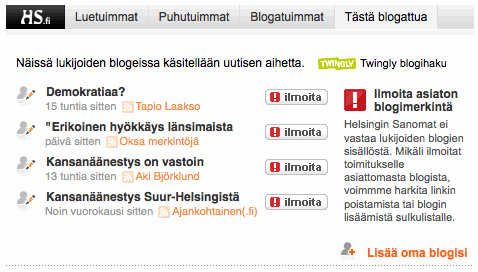My colleague and the author of Strategy of Giving Miikka Leinonen argues that the advertisers should get rid of banner ads. I agree that those ads are more than often irritating, but it is not inherently so.
The main reasons people get frustrated with banners is that there are too many of them, they distract attention, or that they slow down the browsing experience to a non-satisfying level. These are all issues that can be fixed.
The critical area of improvement in terms of performance is in the quality of the current advertising management software. I’ve written about this in the past. In short, these systems do basically nothing in behalf of the site owner to prevent slowly loading pages.
Other causes of frustration are just negotiable. Web sites offering ad space should put stricter requirements to advertisers. Animation length, the number of ads per page, the download size, and the number of distinct HTTP connections required should all be limited to as low as possible. Today, not many have the guts to do this. Advertising is money, and you would be a fool not to accept it.
Take a look at the New Your Times website. They have pretty strict rules for the ads. I cannot say that I have ever been intimidated by the ads there.
On the other hand, in a small market area like here in Finland, these decisions might not be possible to make.
Another point of view is that the banner advertising can scale. If you consider how much overhead it is to write different articles to suit the needs of all the sites you would want to advertise in, you will understand how much more economic it is to just copy the banner file over. Because of the basics of SEO you cannot just publish the same advertorial on all of the sites either.
Considering instead building widgets, games or other types of small applications? They can be even more expensive to produce and they cannot be copied much either, since the value of the gift easily decreases.
This is not to say that I disagree with Miikka. Other, more creative forms of advertising should be considered. Advertisers should not accept to buy ads from a page that is filled with other distracting ads that compete for the attention of the poor surfer. Designing an even more distractive ad will not help, at least not in the long run.
To summarise: banner ads are not inherently bad and they are a form of advertising that can scale to an unlimited number of websites.

